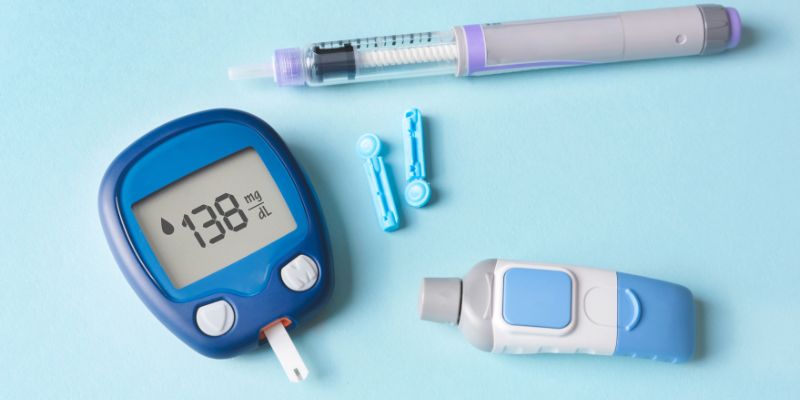Which Statin Is Best for People with Diabetes: All You Need To Know
For those with diabetes, controlling cholesterol levels becomes a major focus. The class of drugs known as statins, which help to drop cholesterol, is often advised to lessen the risk of heart disease and stroke. But given the various statin choices, how would one decide which one would be best for someone with diabetes?
This article explores several statins and their advantages, stressing the best options for those with diabetes. Whether your statin is high-intensity or moderate-intensity, the correct choice will enhance your long-term health.
Understanding Statins and Their Role in Diabetes
Medications called statins help decrease blood cholesterol. They prevent a molecule your body needs to produce cholesterol. Maintaining reasonable cholesterol levels is crucial for those with diabetes to avoid cardiovascular problems. Diabetes raises the risk of heart disease; hence, cholesterol control becomes the first priority.
Often known as "bad cholesterol," high levels of LDL cholesterol accumulate in your arteries and cause plaque development, therefore raising your risk of heart attacks or strokes. Added protection comes from statins, which help lower LDL levels and may also improve HDL cholesterol, sometimes known as "good cholesterol."
Types of Statins for Diabetes Management:
Generally speaking, depending on how much they reduce cholesterol, statins come in low, moderate, and high-intensity categories among various varieties. The most often recommended statins are closely examined here:
- Atorvastatin (Lipitor): Atorvastatin is one of the most often prescribed statins for those with diabetes. Doses ranging from moderate to high intensity abound here. Often used for long-term cholesterol control, atorvastatin has lowered the risk of heart attacks in those with diabetes. Those who require a notable drop in their LDL cholesterol levels should find it appropriate.
- Rosuvastatin (Crestor): Rosuvastatin is another high-intensity statin that helps greatly lower LDL cholesterol. Those with diabetes who are at higher cardiovascular risk should especially follow this advice. Research shows that rosuvastatin can lower cholesterol and reduce the risk of significant cardiovascular events.
- Simvastatin (Zocor): Prescribed for those without a need for as strong as LDL cholesterol lowering, simvastatin is a moderate-intensity statin. Those with diabetes who are younger or have fewer risk factors for heart disease should especially follow this advice.
- Pravastatin (Pravachol): Pravastatin is less effective than atorvastatin or rosuvastatin, a lowto moderate-intensity statin. However, it is a good alternative nonetheless for those with diabetes who have reduced cardiovascular risks or who might find it difficult to tolerate more potent statins.
An individual's particular cholesterol levels, cardiovascular risk, and degree of medication tolerance will all affect the statin they choose.

Benefits of Statins for People with Diabetes:
People with diabetes are at more risk for cardiovascular illnesses. Several advantages of statins make them indispensable in controlling this risk. Here's the rationale behind statin recommendations:
- Cardiovascular Protection: Statins lower LDL cholesterol, lowering the risk of stroke and heart disease. Even if cholesterol levels are not particularly high, statins give those with diabetes extra cardiovascular protection.
- Reduced Inflammation: People with diabetes, who often have more inflammation because of higher blood sugar levels, may benefit from statins' anti-inflammatory qualities. Inflammation is mostly dependent on the development of cardiovascular disorders.
- Improved Blood Vessel Function: By helping the blood arteries to operate better, statins enable enhanced circulation. For those with diabetes particularly, this is crucial since elevated blood sugar over time can compromise blood vessels.
- Prevention of Plaque Buildup: Statins reduce LDL cholesterol, helping to stop artery plaque development. This lowers the risk of atherosclerosis, a disorder in which the arteries constrict and stiffen, raising the risk of heart attacks and strokes.
High-intensity vs. moderate-intensity statins for diabetes:
Age, cholesterol level, and general cardiovascular risk all have a role in determining which high-intensity or moderate-intensity statins to use. The two are broken out here:
HighIntensity Statins:
Use high-intensity statins such as atorvastatin (4080 mg) and rosuvastatin (2040 mg) for diabetes patients at a higher risk of cardiovascular events. Ideal for those who require strong cholesterol control, these statins can lower LDL cholesterol by 50% or more. Those with a history of heart disease or stroke are sometimes advised to take high-intensity statins.
Moderate-intensity statins:
Those requiring less aggressive cholesterol control take moderate-intensity statins, including pravastatin (4080 mg) and simvastatin (2040 mg). These statins cut LDL cholesterol by roughly thirty to fifty percent. Younger diabetics or those with fewer cardiovascular risk factors may find moderate-intensity statins more appropriate.
Possible Side Effects of Statins for People with Diabetes
Although statins usually have few side effects and are safe and efficient. The most often occurring adverse effects of statins consist in:
- Muscle Pain and Weakness: Muscle aches are one of the most often mentioned concerns among those on statins. Though often minor, this side effect might be severe in rare situations.
- Liver Damage: Statins can rarely damage the liver and influence liver enzymes. Those on statins, particularly those with diabetes, should routinely check their liver function.
- Increased Blood Sugar Levels: Statins have been associated with a modest rise in blood sugar levels. People with diabetes should monitor this, although generally, the advantages of statins in preventing heart disease exceed any risk.
- Digestive Problems: Some people may experience stomach problems like constipation, diarrhea, or nausea while taking statins. These adverse effects are usually moderate and can be controlled with dosage changes.
How to Choose the Right Statin for Diabetes?
Selecting the appropriate statin calls for numerous considerations. Your healthcare practitioner will give thought to your:
- Health and Age History: Older persons or those with past heart disease could require high-intensity statins.
- Cholesterol Levels: Whether you require a moderate or high-intensity statin will depend on the degree of your cholesterol levels.
- Tolerance to Medications: Should side effects from a high-intensity statin cause concern, your doctor could advise moving to a moderate-intensity alternative.
Conclusion:
Statins are quite important for those with diabetes in lowering their risk of cardiovascular disease. Your cholesterol levels, cardiovascular risk, and medication tolerance will determine your optimal statin. Both moderate and high-intensity statins can offer major long-term health advantages regardless of your requirement for either. See your healthcare practitioner for the correct statin and dosage to control your cholesterol and guard your heart.













